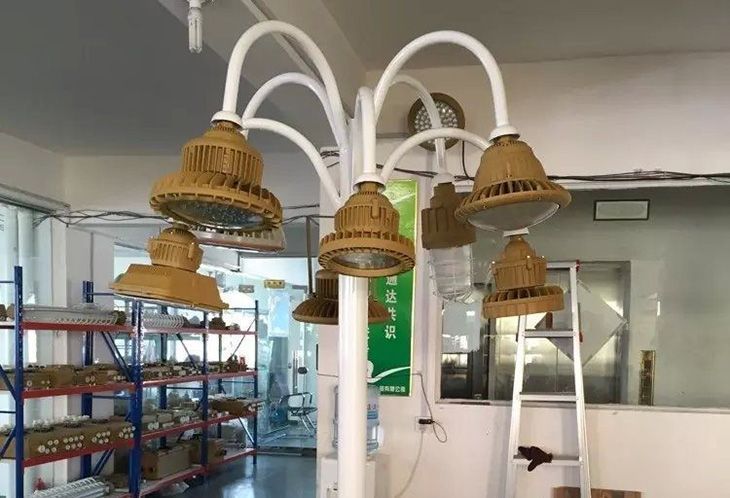1. LED explosion-proof lights must have complete accessories, and non-explosion-proof parts (such as metal, lampshade, junction box, etc.) must not replace the light fixtures’ components. The housing of lights and switches should remain intact. Metal meshes should be free from deformation, lampshades without cracks, and the explosion-proof markings clearly visible.

2. The threaded connection between the lamp bracket, switches, and junction boxes should engage at least five times. The processed threads should be smooth, complete, free of corrosion, and coated with electrophoretic composite grease or conductive anti-rust grease. The light bulb fastening bolts should be tightened, and switches secured to ensure they do not become loose, and washers should remain intact.
3. The installation location of the explosion-proof lights should be far from the release source, and should not be higher or lower than the pressure release outlets of various pipelines.
4. When installing explosion-proof lights, the nozzles near the light fixtures and on top of the pipelines must be sealed, as well as the nozzles inside the lamp heads.
5. The specific method for isolation and sealing is to wrap the external threads with fine cotton rope. The number of coils depends on the diameter of the wire and the pipe. They must be close to the inner diameter of the pipe. If there are multiple wires inside the pipe, they should be wound 1 to 3 times before wrapping. The pipe joints should be sealed with asphalt.
6. Electrical connections must be tightly contacted and secured against loosening, such as using anti-loosening washers and locking nuts. To ensure the seal of the device, inlet isolation and sealing must be carried out. If the wires are not disconnected, use an explosion-proof plug to block the socket.
 Shenhai Explosion-Proof
Shenhai Explosion-Proof
